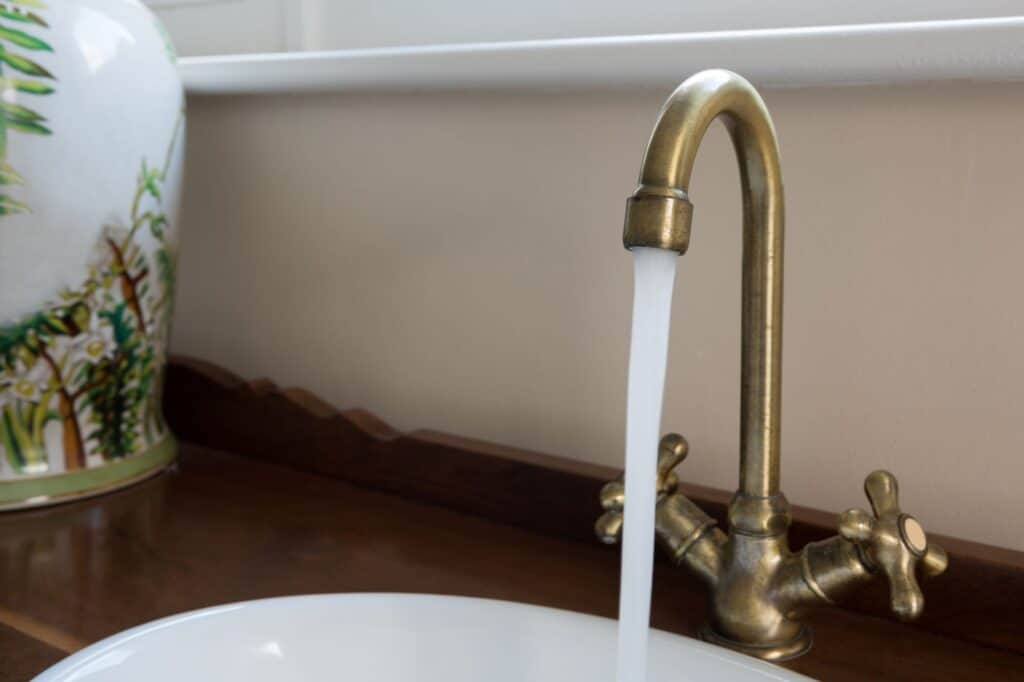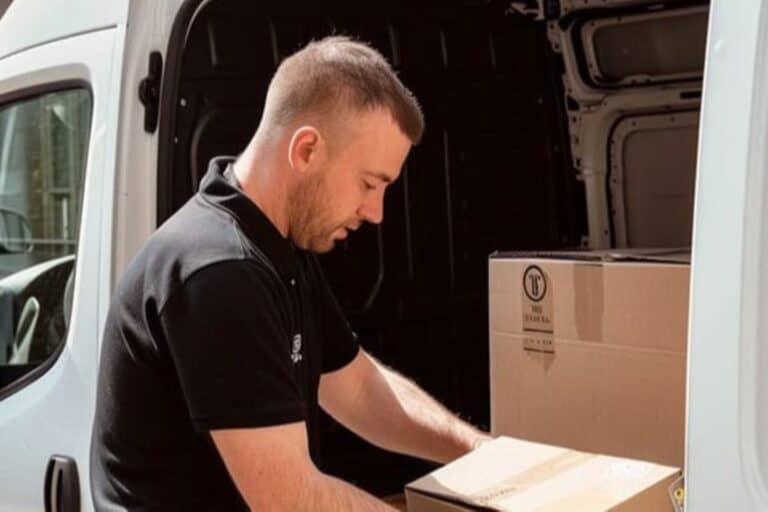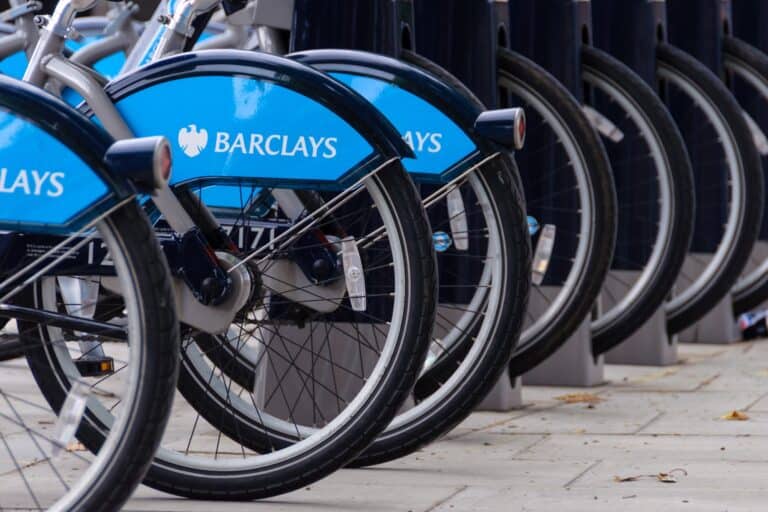Moving to a new home means you need to focus on changing address and updating utilities after moving. This guide will walk you through updating your details with utility providers, setting up services at your new home, and avoiding overlaps. Let’s dive in.
Key Takeaways
- Make a utility checklist and notify providers in advance to avoid service overlaps and extra fees when moving house.
- Centralise updates by giving previous and new address details along with the moving date to streamline setting up key utilities.
- Switching energy suppliers and setting up broadband early can save money and ensure seamless service at your new home.
Updating Utilities and Changing Address Made Easy
Moving house requires meticulous planning and preparation. Start by listing all the essential utilities you need to update, which typically include:
- Electricity
- Gas
- Water supply
- Sewerage services
- Broadband
The goal is to avoid any unnecessary expenses and hassle, some of which may take weeks to resolve if not handled in advance.
A smooth transition requires you to inform your providers about your move, including your previous address, new address, and the exact moving date. If your existing utility contracts can be transferred to your new house, that’s great. If not, make sure to end your existing contracts and start new ones at your new address.
Remember, some updates like your TV licence can be done up to three months before moving home. Taking care of these details early will save you from the last-minute rush and ensure that everything is set up by the time you move in.
Centralising Your Utility Updates
Centralising utility updates can significantly simplify your home moving process, and early planning can circumvent stress, guaranteeing a smooth transition. A moving house utility checklist is invaluable in this process, helping you cover everything essential for your move.
To centralise your updates, you’ll need to provide your previous address, new address, and the moving date. This information is necessary for setting up key utilities like energy, broadband, water, sewerage, and council tax. Existing utility contracts can often be transferred from the old house to the new one by the provider. If this isn’t possible, you can end the existing contract and start a new one at your new address.
Existing utility contracts can often be transferred from the old house to the new one …
Planning your home move a few weeks in advance helps to prevent overlap in utility bills. Before moving into your new home, you can set up gas and electricity as early as four weeks in advance. This will ensure a smooth transition when you move in. This proactive approach ensures that everything is ready by the time you move in, making your transition seamless and hassle-free.
Informing Your Local Council About Council Tax
A vital step in moving is notifying your local council to ensure accurate handling of your council tax. Begin by notifying your previous council online to prevent paying council tax for two properties. Close down your council tax account with your previous council when moving to a different area.
Next, contact the local council at your new address to register for council tax. This involves:
- Setting up a new council tax account
- Receiving information about payment methods and schedules
- If your new property doesn’t have a council tax band, the local council will arrange for it to be assessed.
Managing Water Supply and Sewerage

Another important aspect of moving is managing your water supply and sewerage services. Here are the steps to follow:
- Complete a change of address for your water supplier and notify them about your move.
- Upon moving to your new address, find out who supplies the water and sewerage services.
- Set up an account with the new water supplier.
Sewerage services might be billed separately or included with your water bill, depending on whether the same company handles both. Water bills are typically made up of two key components: charges for the water you use and fees for treating sewerage and wastewater. These charges together make up the total amount due for your water bill. Remember, your water supplier depends on your location, and you cannot change suppliers without moving house.
Switching Energy Suppliers
You can save money when moving house by switching gas and electricity suppliers. Here are some steps to follow:
- Notify your energy suppliers at least 48 hours before moving to avoid unnecessary expense and hassle.
- Contact your supplier to ask for a transfer with meter reading, new address, and move-in date.
- If utility transfer is not possible, you can end the existing contract and start a new one at the new address.
Customers moving house may find deals that provide free service for the first few months when switching utilities. These deals can help save money during the transition period. You can potentially save on energy bills by switching to new energy suppliers. Find a low-cost supplier or consider taking your fixed-rate tariff with you.
Pre-move Energy Checklist
Before you move, notify your electricity and gas supplier at least 48 hours in advance. Inform your existing energy supplier about your move as early as a week before moving. Meter readings should be taken on the day you move out to provide accurate final bills. Provide the final meter readings to your supplier to close down your previous energy account and avoid paying for energy at two homes.
Before moving, make sure to:
- Check if your smart meter works in ‘smart mode’
- Take a final reading if it doesn’t
- Provide your supplier with a forwarding address for them to send the final bill
- Pay the final bill within 28 days
- Ensure all outstanding balances with your energy supplier are paid before moving out to avoid late fees.
Post-move Energy Setup
Once you move in, follow these steps:
- Contact your new energy supplier as soon as possible to set up your account and inform them that you are the new resident.
- Find and read your electricity and gas meters on the day you move in, and provide these readings to your new supplier.
- Check the energy tariffs available and consider switching to a new tariff or supplier if you find a better deal.
RECOMMENDATION
If your property has a smart meter, ensure it is working in ‘smart mode’ to send automatic readings to your supplier. If it isn’t, you will need to take and submit regular readings manually. This proactive approach will help you stay on top of your energy usage and avoid unexpected bills.
Handling Broadband Services
Efficient management of broadband services necessitates thorough planning. Here are some steps to follow:
- Determine how much notice your current broadband provider needs before you move.
- Research broadband options in advance to see what is available at your new location.
- You can keep your current broadband bundle if the new area supports it.
The average wait time for broadband setup when moving house is about 8 days, so it is important to plan ahead. Providers like Virgin Media or Hyperoptic might require an engineer visit to set up broadband if the new property does not have the necessary connections. Some broadband providers offer next-day installation, but it’s advisable to plan for a brief internet outage.
Checking Current Broadband Contract
Before moving, check your current broadband contract to determine whether you want to keep the same provider or switch based on satisfaction, cost, or transfer feasibility. Consider switching providers if you are dissatisfied with your current service, want a cheaper deal, or transfer service to your new home is not possible.
You may need to pay an exit fee if you want to switch broadband providers before your contract ends. If you’re moving to a new-build property, check if there is an Openreach connection for setting up your broadband. Contact your current broadband provider a few weeks before moving to close down the account and avoid overlapping broadband fees.
Comparing New Broadband Deals
When comparing new broadband deals, consider factors such as:
- Speed
- Cost
- Contract length
- Data allowances
Check on bundles that include TV and phone services, which could offer better value for money. Be wary of any potential hidden charges or setup fees that may apply.
Use comparison websites to quickly view and compare multiple broadband deals in your area. Read customer reviews and ratings to get an idea of the service quality and customer support experience. This way, you can find the best deal that suits your needs and budget.
Cancelling and Setting Up Water Bills
An essential step when moving is to cancel and set up water bills. Here’s what you need to do:
- Notify your existing water company at least 5 working days before moving and provide a final meter reading if applicable to avoid overpaying.
- You can cancel your water bill online or over the phone with most water suppliers.
- Take final meter readings for water and sewerage on the move-out date and inform the supplier to ensure accurate billing.
Take the following steps to set up your water bill at your new home:
- Take a meter reading as soon as you move in if it has a water meter.
- Inform the local water company about your move and provide them with your new address, telephone number, and email.
- Set up your water bill as soon as possible after moving in. You will need to provide your name, bank details, move-in date, and an initial meter reading.
By following these steps, you can ensure that your water bill is set up correctly at your new home.

Dealing with Prepayment Meters
If your new home comes with a prepayment meter, you should immediately contact the current supplier. This will ensure a smooth transition and avoid any disruptions in your energy supply. Before putting any money on the meter, contact the current energy supplier to avoid paying previous occupants’ debts. Ask the supplier to remove any debt on the prepayment meter.
Request a new prepayment key or card from the supplier to add money to the meter. If you need to switch from a prepayment meter to a regular meter, inform the supplier about any difficulties the prepayment meter causes. It is possible that they could make it more user-friendly or decide to eliminate it altogether. Either option is a potential solution to consider.
Avoiding Utility Overlaps
During the moving period, utility overlaps may occur if you pay for services at both your old and new property. To avoid this, organise your home move a few weeks ahead of the move-in date and take final meter readings on the day you move out.
To ensure a smooth transition when moving out, follow these steps:
- Provide your gas and electricity meter readings on the day you’re moving out and request a final bill from your supplier.
- Ensure all outstanding balances with your energy supplier are paid before moving out to avoid late fees.
- Provide your supplier with a forwarding address to send the final bill and ensure correct contact information.
Saving on Energy Bills
Relocating offers an opportunity to:
- Evaluate and possibly switch to more cost-efficient or superior utility suppliers
- Compare the market and find a lower-cost deal using tools like Uswitch
- Save money by switching from a prepayment meter to a smart meter in credit mode, although this might require passing a credit check or paying a security deposit.
Consider energy-saving measures for your new home, such as:
- Installing energy-efficient light bulbs
- Monitoring your energy consumption
- Setting your thermostat to a ‘dead band’ between heating and cooling can save up to 12.7% on energy costs
- Using overhead fans can reduce the need for heating and cooling, saving up to 15% on energy bills
- Draught-proofing doors and windows can prevent energy loss, making heating and cooling more efficient.
Investing in insulation for pipes, roofs, and walls can significantly reduce energy loss. Sub-metering individual appliances and activities can help identify high-energy usage areas for targeted savings. These steps will help you save money and make your new home more energy-efficient.
Summary
Managing your utility updates efficiently when moving home is crucial for a smooth transition. By planning ahead and following our comprehensive checklist, you can avoid unnecessary expenses and ensure uninterrupted services at your new address. From notifying your local council about council tax to setting up your water supply and sewerage services, every step is essential.
Remember to compare energy suppliers and consider switching for better deals. Handling broadband services and dealing with prepayment meters can also be streamlined with proper planning. By taking these steps, you can make your move to a new home in Ilford as seamless and stress-free as possible, allowing you to enjoy your new beginning without any utility-related headaches.
Frequently Asked Questions
How far in advance should I notify my utility providers about my move?
Notify your utility providers at least 48 hours to 28 days in advance to ensure a smooth transition and avoid unnecessary expenses.
What should I do if my new home has a prepayment meter?
Contact your energy supplier right away to get a new prepayment key or card and ask them to clear any previous occupants’ debts from the meter. It’s important to do this as soon as possible to avoid any issues with your energy supply.
How can I avoid paying utility bills for both my old and new homes during the move?
Make sure to organise your move ahead of time, take final meter readings on your moving day, and provide a forwarding address to your suppliers for the last bill. This way, you can avoid paying utility bills for both your old and new homes.
What are some ways to save on energy bills in my new home?
Try switching to cheaper energy suppliers, using energy-efficient light bulbs, and monitoring your energy consumption to save on energy bills in your new home. Also, consider implementing energy-saving measures such as draught-proofing and using overhead fans for additional savings.
How do I set up a new water bill at my new address?
To set up your new water bill at your new address, contact the local water company as soon as you move in and provide them with your details, including your name, address, phone number, email, bank details, move-in date, and initial meter reading.







